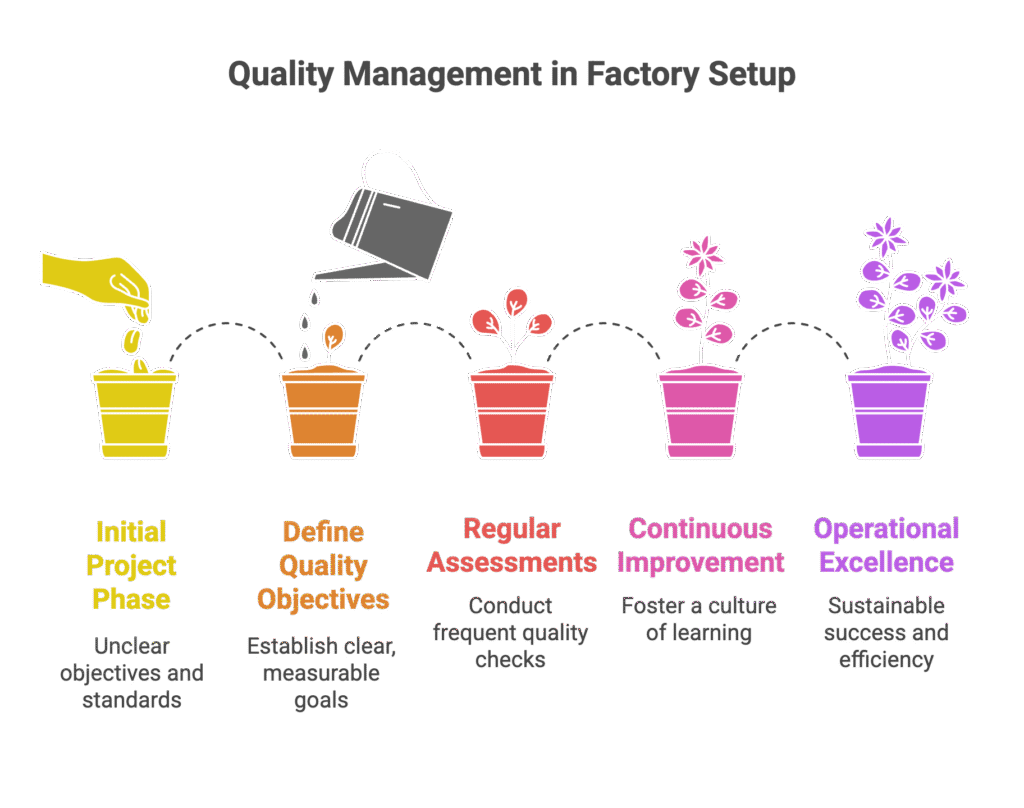In today’s competitive manufacturing environment, the difference between a successful and a struggling factory often boils down to one critical factor — Quality Management. Whether you’re setting up a new garment, jute, or leather factory, or expanding your production capacity, it is no longer enough to just “complete” a project. It must be executed with precision, adherence to standards, and a clear strategy for continuous process improvement.
I’m Kiriti Roy, a Factory Setup Consultant and Project Management Expert with over 29 years of industry experience. Through my company, Lord Industrials Pvt. Ltd., I’ve helped numerous businesses plan, design, and execute production setups that are not only efficient but quality-assured from the ground up.
This comprehensive blog will walk you through the entire Quality Management cycle — Planning, Assurance, and Control — with practical insights, tools, and real-world applications in the context of industrial project execution.
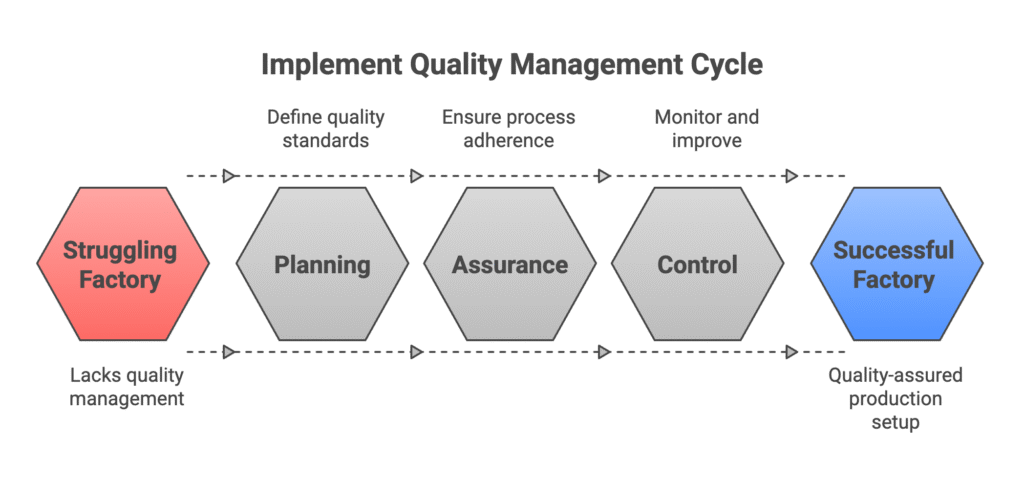
Table of Contents
Toggle🧩 What Is Quality Management?
Quality Management refers to the systematic approach used to ensure that a product or service is consistent, meets defined requirements, and enhances customer satisfaction.
It covers:
- Planning for Quality (Plan)
- Ensuring Quality in Execution (Do)
- Auditing for Conformance (Check)
- Improving the Process Continuously (Act)
This is commonly known as the PDCA Cycle (Plan–Do–Check–Act) — the foundation of any effective quality system.

Why It Matters in Industrial Projects:
- Reduces rework and waste
- Improves productivity
- Ensures safety and compliance
- Builds trust with clients and partners
- Protects profit margins
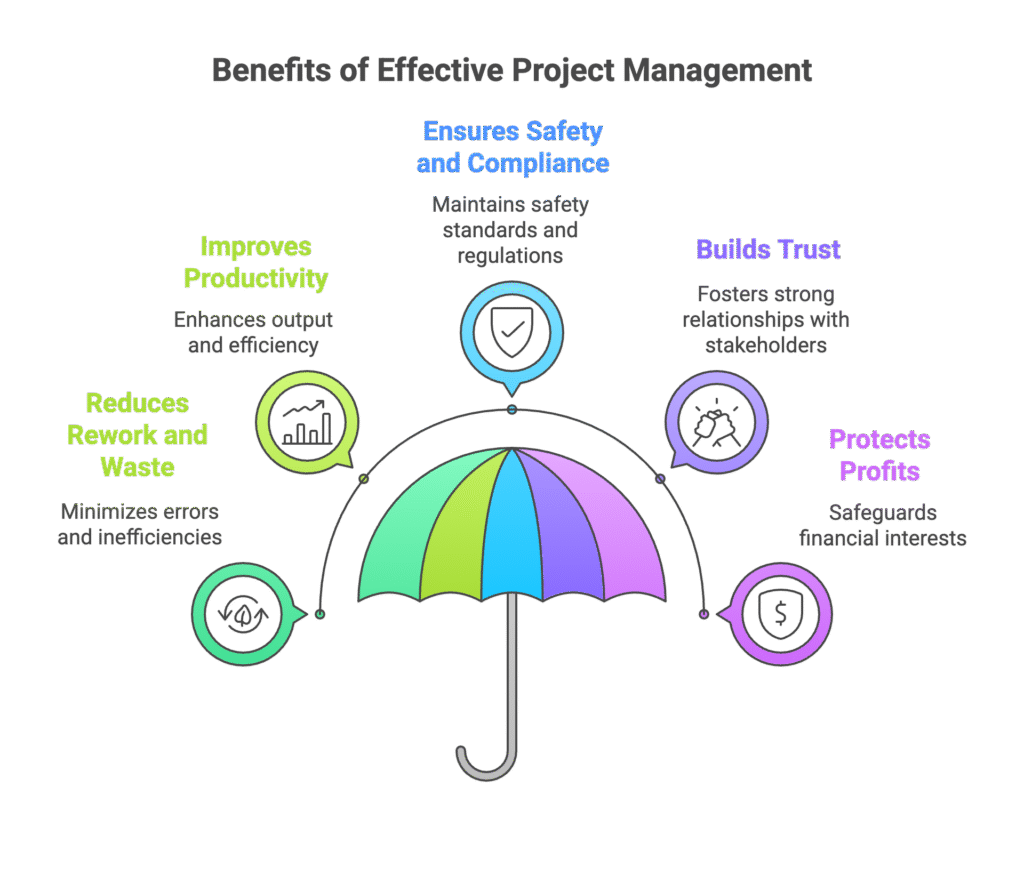
🧭 Phase 1: Quality Planning – Setting the Standard Before Execution
Before any machine is installed or production line activated, quality must be defined, documented, and aligned with project goals.
Key Components of Quality Planning:
1. Cost-Benefit Analysis
Helps you decide which quality initiatives offer the best return. For example, while automated cutting equipment may seem expensive, it dramatically reduces wastage and labor costs over time.
2. Cost of Quality (CoQ)
Breaks down into:
- Prevention Costs: Training, SOP creation, safety equipment
- Appraisal Costs: Inspections, testing, compliance audits
- Internal Failure Costs: Scrap, rework, downtime
- External Failure Costs: Returns, customer dissatisfaction
✅ Investing in prevention is far cheaper than fixing failures after they occur.
3. Control Charts
Used to track production process stability. Helps identify whether variations in quality are within acceptable limits or need intervention.
4. Benchmarking
Compare your practices with the industry’s best. For example, if top-tier factories achieve 98% first-pass quality, your factory should aim for the same.
5. Flowcharting
Visualizing each production step reveals inefficiencies and risks before implementation.

📋 Key Outputs of Quality Planning:
a) Quality Management Plan
Details how the project team will meet quality requirements. Includes:
- Inspection plans
- Documentation processes
- Control procedures
- Roles and responsibilities
b) Quality Metrics
Measurable indicators like:
- 95% inventory accuracy
- Less than 2% defect rate
- Stitch density between 9–12 per inch
c) Quality Checklists
Ensure no key activity is skipped, such as:
- Needle inspection before sewing
- Final pressing temperature checks
- Electrical wiring load test before commissioning
d) Process Improvement Plan
Outlines:
- Process boundaries: Where each operation starts and ends
- Inputs/outputs: Materials, actions, and expected results
- Process owners: Responsible departments or individuals
- Metrics & Targets: Defined improvement goals
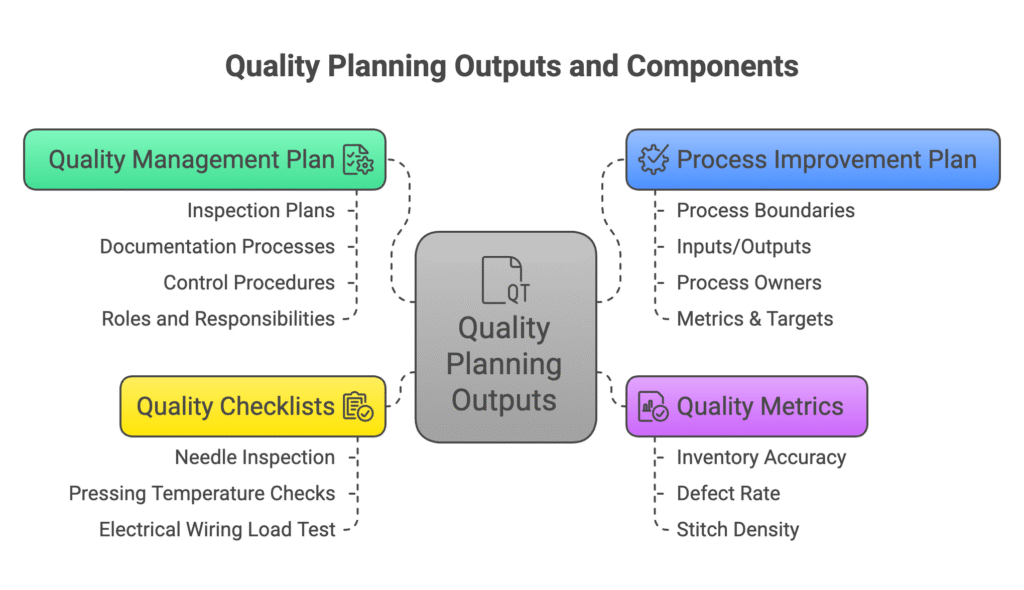
🔍 Phase 2: Quality Assurance – Monitoring What’s Being Done
Quality Assurance (QA) is about ensuring that the project or factory setup is proceeding in accordance with the quality plan.
It answers: “Are we doing things the right way?”
Tools Used in QA:
1. Quality Audits
- Structured reviews of processes, often random or scheduled
- Ensures compliance with internal SOPs and external regulations
- Used during equipment installation, finishing line setup, or store layout execution
2. Process Analysis
Uses tools like:
- Root Cause Analysis (RCA): Identifies underlying issues behind recurring defects
- Pareto Charts: Highlights the most common sources of problems
- Fishbone Diagrams (Ishikawa): Maps causes of process failures across people, machine, material, and method
✅ Example: If your cutting line is producing inconsistent panel sizes, a root cause analysis may reveal blade dullness, improper marker planning, or uneven fabric layers.
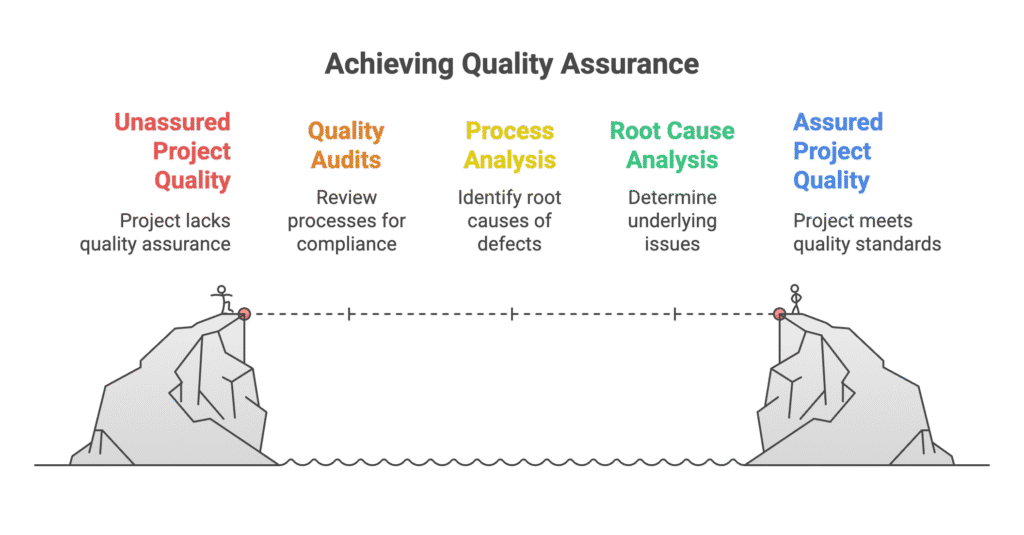
📊 Phase 3: Quality Control – Inspecting the Output
Quality Control (QC) is the process of inspecting actual outcomes to ensure they meet defined quality standards. It is product-focused and is often carried out by dedicated QC inspectors.
It answers: “Are we achieving the results we planned for?”
QC Activities in a Factory Setup:
- Material Testing: Checking GSM, shrinkage, fabric flaws before spreading
- Stitch Quality Checks: In-line inspections for skipped stitches, puckering, seam alignment
- Final Audit: Random sampling post-finishing before dispatch
- Infrastructure Checks: Ensuring electrical load test results, table flatness, partition installation, and more
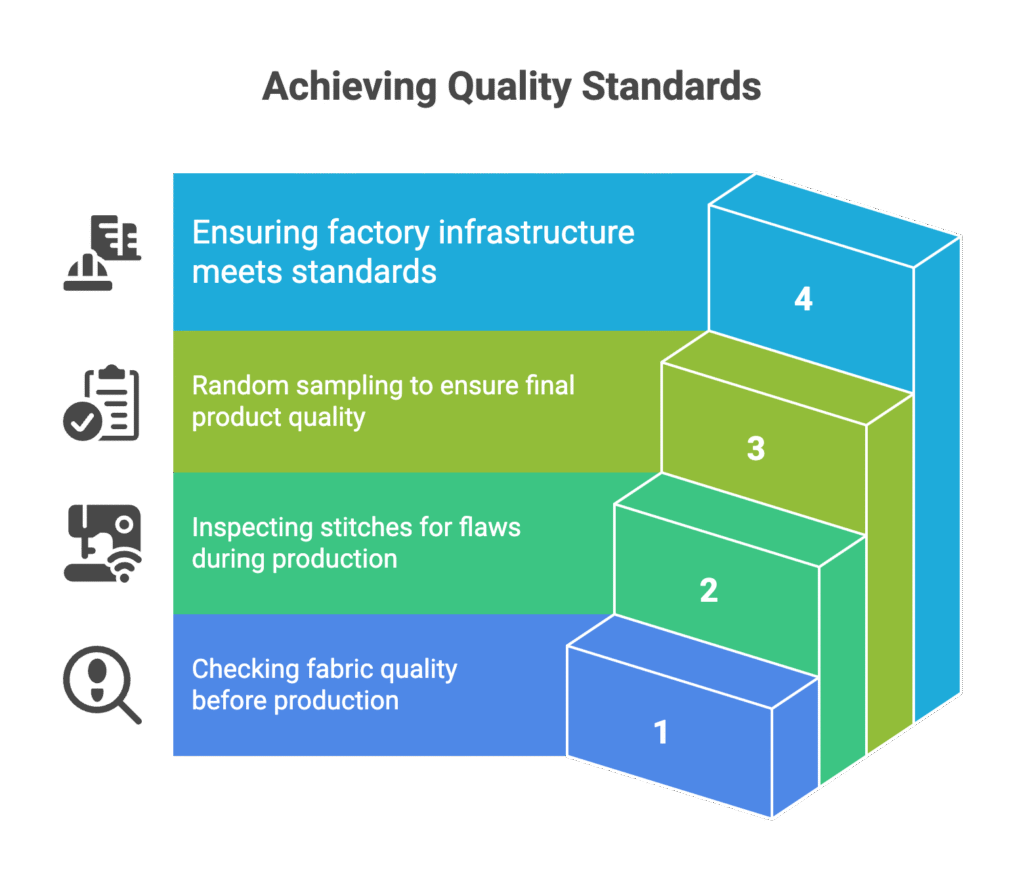
🔄 Continuous Process Improvement – The Real Power of PDCA
Improvement is not optional—it’s essential for competitiveness.
Even a 1-second saving per operation can have massive impact:
Real-World Example:
- Operation time: 25 sec → Improved to 24 sec
- Daily capacity: 1152 pcs → Increased to 1200 pcs
- Profit/piece: ₹25
- Daily gain: ₹1200
- Monthly gain: ₹30,000
- Yearly gain: ₹3.6 lakhs
All from just one second improvement. Imagine the result from 10 such changes!
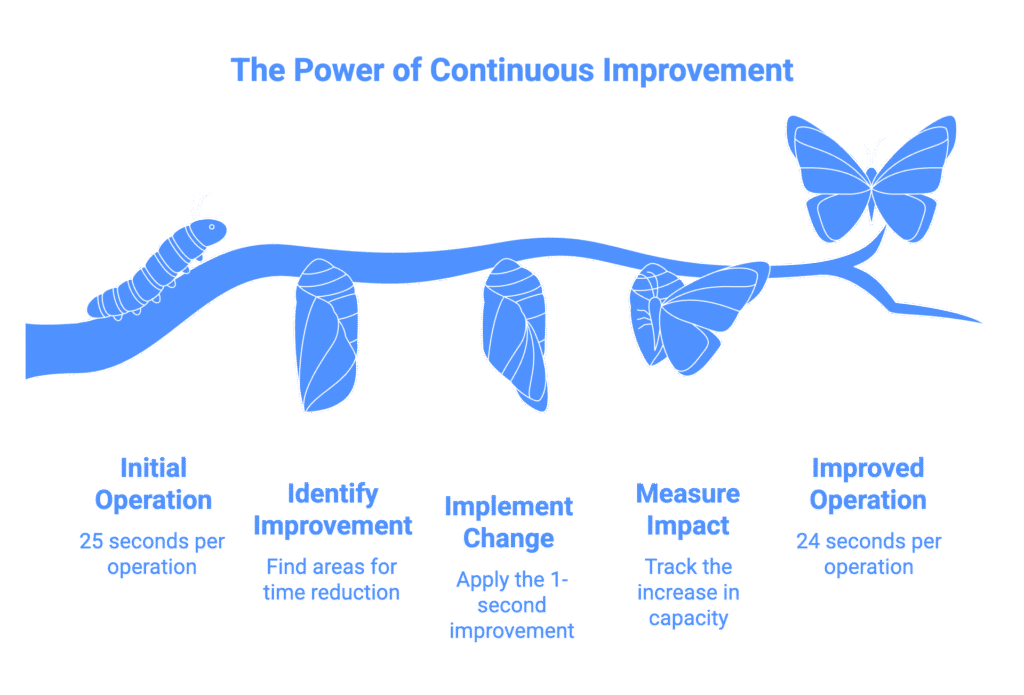
🔧 How We Apply Quality Management at Lord Industrials
At Lord Industrials Pvt. Ltd., we implement quality principles in every stage of our project delivery cycle:
🔹 During Factory Planning:
- Conduct process flow simulations
- Define utility load calculations accurately
- Identify risk-prone zones (fire exits, power distribution)
🔹 During Execution:
- Quality audits for electrical, fabrication, and finishing work
- Use of calibrated tools and machinery
- SOPs for installation, testing, and handover
🔹 During Client Handover:
- Punch list verification
- Final QC reports
- Training of client teams on usage, safety, and maintenance
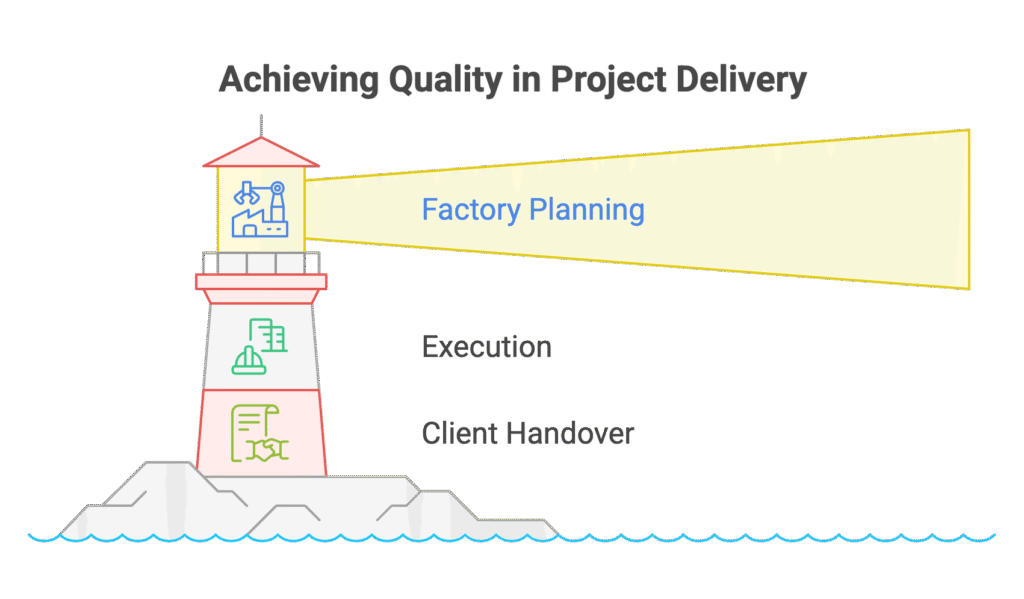
🎯 Benefits of Quality Management in Factory Projects
| ✅ Benefit | 💡 Impact |
| Lower rework and wastage | Save costs on raw material and labor |
| Better production planning | Accurate timelines and delivery commitments |
| Improved machine life | Lower breakdowns through preventive quality |
| Higher client satisfaction | Repeat orders and stronger reputation |
| Safer work environment | Fewer accidents, higher morale |
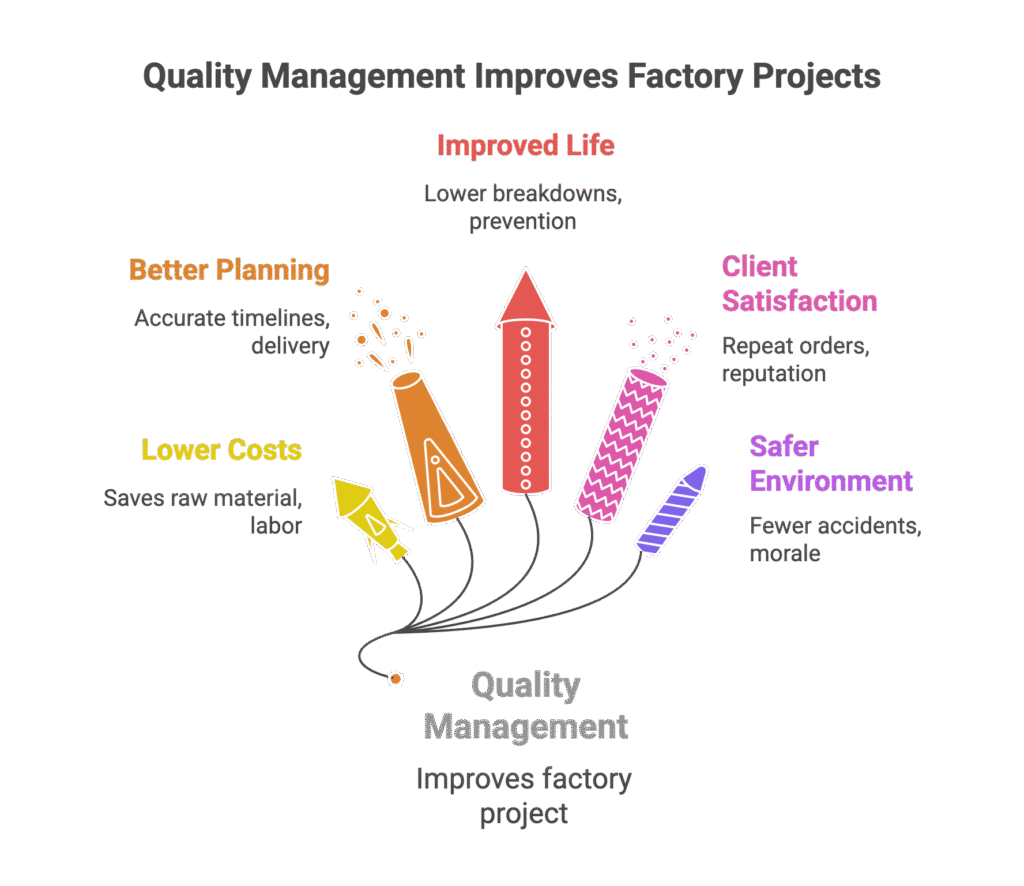
👨💼 About Kiriti Roy – Your Quality-Focused Factory Consultant
With over 29 years of industrial experience, I’ve helped entrepreneurs and organizations build over 100+ factories across India — in garments, leather goods, jute bags, and more.
I specialize in:
- Factory Layout & Facility Planning
- Utility & Infrastructure Setup
- Production Floor Design & Ergonomics
- Machinery Selection & Technical Advisory
- Project Execution & Quality Control
As the Founder & Director of Lord Industrials Pvt. Ltd., I’ve built a professional team and product range that supports businesses with:
- Industrial Furniture
- Material Handling Trolleys
- Storage Racks
- Turnkey Setup Services
📞 Ready to Build Your Factory with Quality at the Core?
Let’s connect and plan your next quality-first project. You’ll get:
✔️ Expert Consultation
✔️ Process Flow Design
✔️ Equipment & Layout Advice
✔️ Project Supervision & Execution
✔️ Quality Planning & Audit Systems
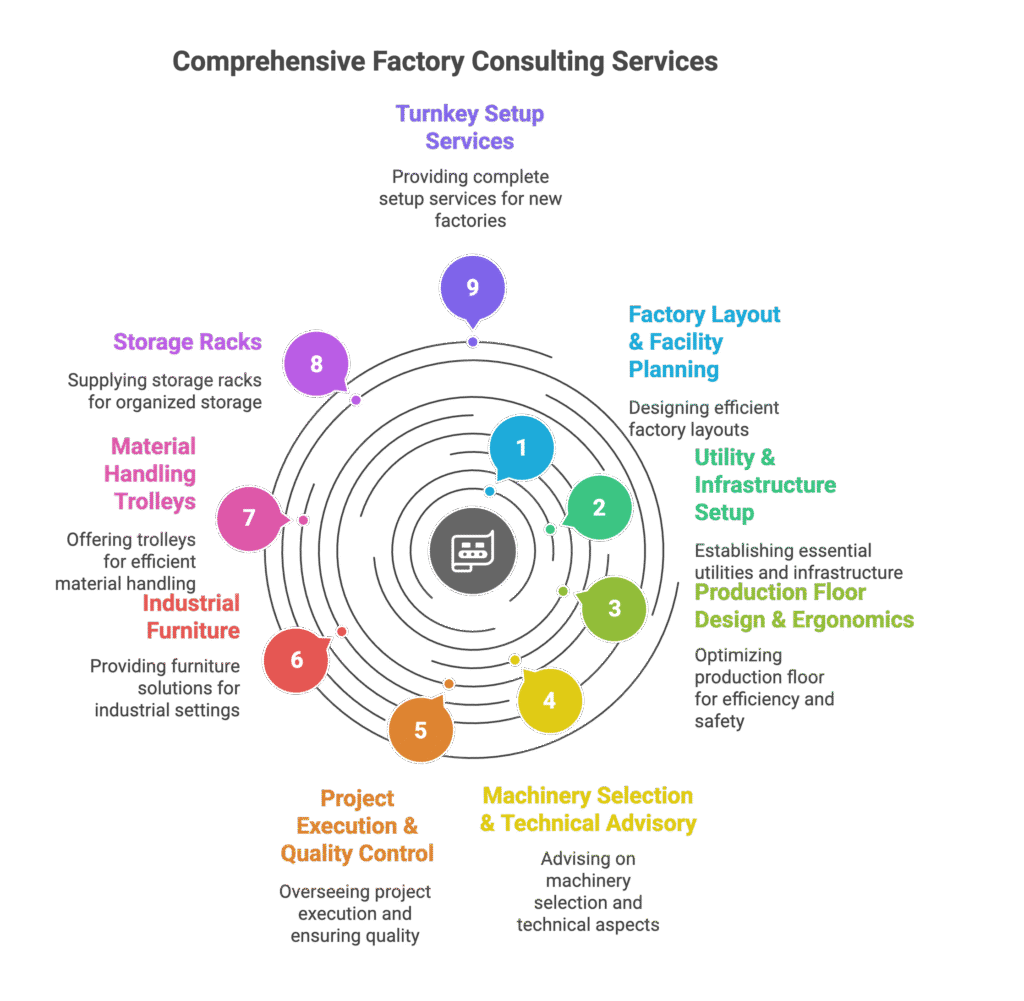
✉️ Contact Details:
🌐 Company Website: www.lordindustrials.com
📧 Email: connect@kiritiroy.com | info@lordindustrials.com
📲 Call or WhatsApp: +91 7603035011, 76053011
Follow me on LinkedIn, Facebook, and YouTube for insights on factory setup, industrial infrastructure, and business scaling strategies.
✍️ Final Words:
Quality management isn’t just about checklists — it’s about building excellence into every brick, bolt, and business decision. At Lord Industrials and through my personal consultancy, I am committed to helping you build smarter, faster, and future-ready factories.
For more on factory setup services, visit our Factory Setup Solutions
We also offer a wide range of industrial furniture and material handling equipment. Explore our products
To dive deeper into project management principles, visit PMI
Factory Setup Guides:

